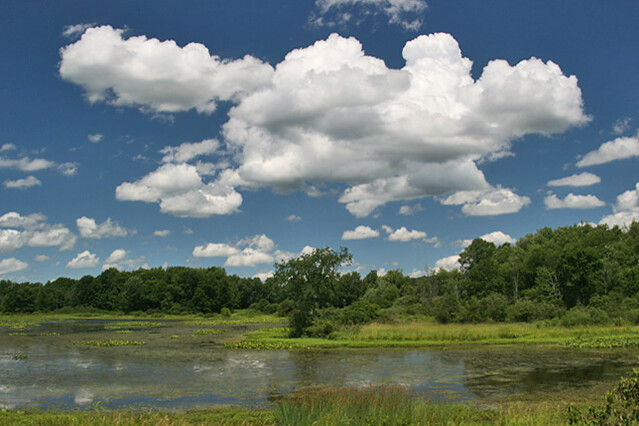As we roll into summer, the temperature and humidity are also rapidly increasing. Hot, humid days bring an increase in outdoor activities, but they also bring on a weather phenomenon that lights up the sky in streaks and makes itself known with loud booming in the distance.
Some people find thunderstorms calming, awe inspiring, and beautiful. Some people walk out onto the front porch to watch the lightning streak across the sky. I am unquestionably not one of those people. If you’ve ever had a pet that wedges itself behind or under the sofa during a thunderstorm, know that I am with them in spirit. Rationally, I know it’s likely nothing terrible will happen during your average thunderstorm, but my brain still sends out a danger alert, especially during those extra loud booms of thunder, even though the noise is the least dangerous part.
Thunderstorms and rain storms are a result of the rapid upward movement of warm and moist air, which is why they tend to happen in the summer for those in generally cooler climates and often happen in the evening as the day cools off. As that humid summer air is swept upward, it cools and condenses. The condensation of water in the atmosphere is what forms clouds, and under certain circumstances forms those giant columns of dark clouds in the sky that indicate a storm or at least a lot of rain coming your way.

Lightning and thunder is the progression of this process. As water droplets move up and down in the cloud, smaller charged particles are moving as well. The re-arrangement of these electrons causes lightning. The accompanying noise that reminds many of drums or falling bowling pins and that we call thunder is actually just a sound created by the rapid heating of the air due to lightning passing through followed by the air quickly cooling.
Like many people, I have been out in the woods as rain and a thunderstorm begins to close in. I have found myself lying in a tent at night as the ground shook beneath me with the rumbling of thunder. While it is much harder to predict a storm’s arrival in the middle of the night, you can often tell a storm is incoming during the day if you pay attention. Keeping an eye on the sky can be just as telling as checking an app on your phone.
There are always exceptions and there are places where weather is known to change more rapidly, such as over mountains and large bodies of water. It is still good to be prepared if you plan on being outside away from a vehicle or building for a long period of time, even if it is perfectly sunny when you start out. Some days you get more warning, but even if the storm is moving quickly, there are still signs that will alert you that it might be time to find cover.

Of course, there are a multitude of variables to take into account when predicting the weather, but you don’t have to be a meteorologist to make an educated guess about what the weather is going to be like over the next few hours. It just takes some ongoing observations, which many people are unconsciously doing their entire lives. It doesn’t matter whether you spend your days in an office in the city or find yourself working outside all day, most everyone is concerned with the precipitation and temperature that affects how they structure their day or how they dress.
Sometimes you can tell a storm is coming by the stillness of the air or a change in the wind. Clouds are an excellent indicator of precipitation and weather. The shapes, sizes, and color can alert us to impending weather. Those dark, towering cumulonimbus clouds can warn you of an incoming storm or at least heavy rain. Fluffy cumulus and wispy cirrus clouds remind us of sunny days and blue skies, although they might move on and grow to cause rain somewhere else. They are also ideal for cloud watching and imagining shapes as they float by. Watching clouds move and change shape can help us decide whether or not we need a raincoat when we next step outside or even whether we need to start turning back on the trail and heading to the car. Then again, unless you happen to be a meteorologist yourself, there are an abundance of websites, new stations and apps to help you predict when the next storm is coming.
Audubon Community Nature Center builds and nurtures connections between people and nature. ACNC is located just east of Route 62 between Warren and Jamestown. The trails are still open from dawn to dusk but Liberty, the Bald Eagle is currently off display during the construction of the Pamela A. Westrom Wildlife Habitat. You can visit her on her Facebook page. The Nature Center is partially open, including restrooms, the Blue Heron Gift Shop, and some exhibits. More information can be found online at auduboncnc.org or by calling (716) 569-2345.
Chelsea Jandreau is a Nature Educator at ACNC.


Recent Comments